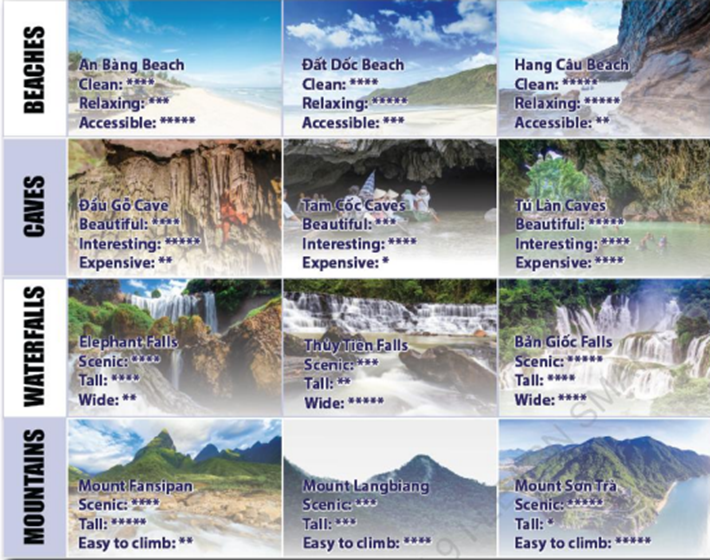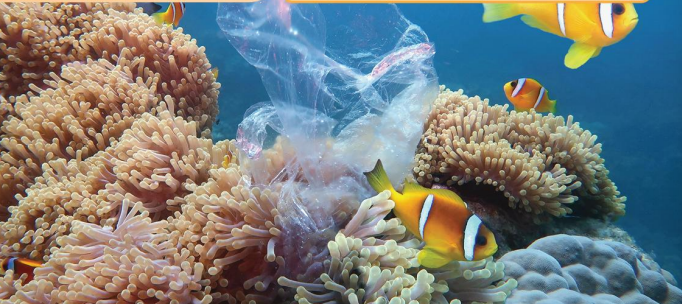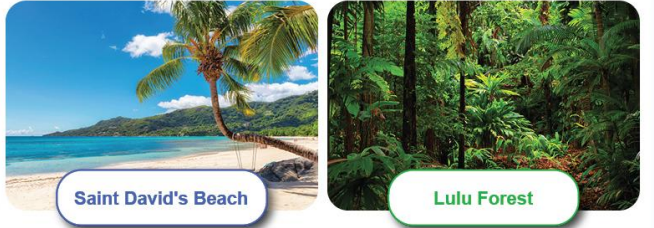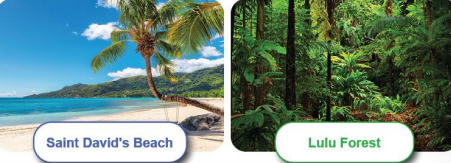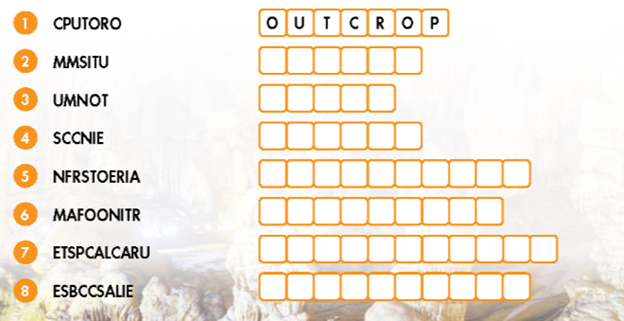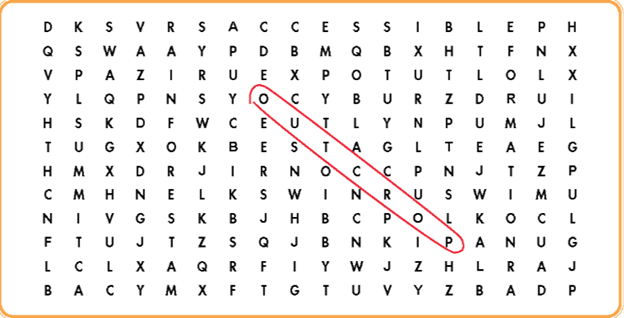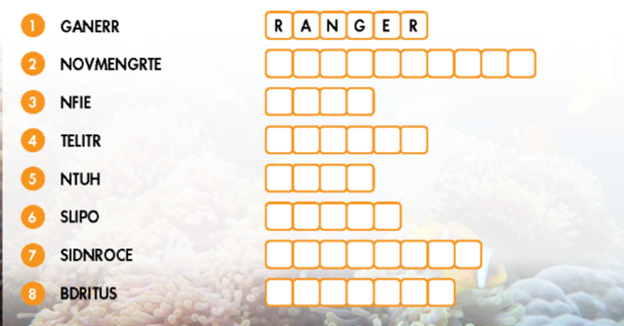Giải SGK, SBT Unit 6. Natural wonders iLearn Smart World
Giải SGK, SBT Unit 6 iLearn Smart World
e. In pairs: Compare the places below.
(Theo cặp: So sánh các địa điểm dưới đây.)
|
|
Green Hill
|
Old Man Falls |
Donald's Cave |
|
Scenic |
**** |
*** |
* |
|
Accessible |
*** |
** |
**** |
|
Expensive to visit |
**** |
** |
*** |
A: Green Hill is a bit more scenic than Old Man Falls.
(A: Green Hill có phong cảnh đẹp hơn Thác Old Man một chút.)
d. Complete each sentence using a verb and a gerund/noun from the box.
(Hoàn thành mỗi câu bằng cách sử dụng một động từ và một danh động từ/danh từ trong khung.)
Verbs:
|
• don't mind |
• keep |
• enjoy |
• hate |
• consider |
• stop |
Gerunds/Nouns:
|
• littering |
• building |
• bringing |
• feeding |
• going |
• hunting |
1. I enjoy bringing lunch to the beach, but I never litter.
(Tôi thích mang bữa trưa ra bãi biển nhưng tôi không bao giờ xả rác.)
2. If people _________ in the river, we won't be able to go fishing there.
3 I _________ off the path. You can find cool places for photos, but you have to be very careful not to damage anything.
4 I _________ animals. Why would people want to harm them?
5. Do you think we should _________ the wildlife? Some people think it's cute, but it's actually bad for the animals’ health.
6. The government should _________ something aroud the national park to keep hunters out.
e. In pairs: Use the prompts to say how you feel about doing the actions below at natural wonders, then give a solution.
(Theo cặp: Sử dụng gợi ý để nói cảm nghĩ của bạn khi thực hiện các hành động dưới đây tại các kỳ quan thiên nhiên, sau đó đưa ra giải pháp.)
|
• love/have picnics • hate/hunt animals
• don't mind/follow park rules
|
• people/consider/bring/trash bag • government/stop/hunt/animals/by/fine hunters
• rangers/consider/make/more signs
|
I love having picnics. People should consider bringing trash bags.
(Tôi thích đi dã ngoại. Mọi người nên cân nhắc việc mang theo túi rác.)
a. In pairs: Take turns asking and answering about how you feel about the actions and suggesting solutions, then politely disagree and give the next solution.
(Theo cặp: Lần lượt hỏi và trả lời cảm nhận của bạn về hành động đó và đề xuất giải pháp, sau đó lịch sự không đồng ý và đưa ra giải pháp tiếp theo.)
A: How do you feel about having picnics at the beach?
B: I don't mind having picnics, but they can cause littering.
A: Yeah. That's why people should stop bringing food.
B: That's not a bad idea, but I think...
(A: Bạn cảm thấy thế nào khi đi dã ngoại ở bãi biển?
B: Tôi không ngại tổ chức dã ngoại, nhưng chúng có thể gây ra tình trạng xả rác.
A: Vâng. Đó là lý do tại sao mọi người nên ngừng mang theo thức ăn.
B: Đó không phải là một ý tưởng tồi, nhưng tôi nghĩ...)
|
Actions |
Problems |
Possible Solutions |
|
Having picnics |
Cause littering |
• people - stop bringing food • government - consider adding more trash cans • rangers - not keep letting people have picnics
|
|
Having group tour |
Damage rock formations |
• people - stop touching them • government - keep building more fences • government - consider limiting tour sizes |
|
Exploring on your own |
Disturb the nature |
• rangers - not keep letting people explore on their own • people - stop going off paths • government - consider fining people who disturb wildlife |
Tạm dịch
|
Actions (Hành động) |
Problems (Vấn đề) |
Possible Solutions (Phương pháp khả thi) |
|
Having picnics (Đi dã ngoại) |
Cause littering (Gây ra xả rác) |
• people - stop bringing food • government - consider adding more trash cans • rangers - not keep letting people have picnics (người dân - ngừng mang theo thức ăn • chính phủ - xem xét bổ sung thêm thùng rác • kiểm lâm - không tiếp tục cho người dân đi dã ngoại) |
|
Having group tour (Có chuyến tham quan theo nhóm) |
Damage rock formations (Phá hủy các khối đá) |
• people - stop touching them • government - keep building more fences • government - consider limiting tour sizes (• con người - ngừng chạm vào chúng • chính phủ - tiếp tục xây thêm hàng rào • chính phủ - xem xét giới hạn quy mô chuyến tham quan) |
|
Exploring on your own (Tự mình khám phá) |
Disturb the nature (Làm xáo trộn thiên nhiên) |
• rangers - not keep letting people explore on their own • people - stop going off paths • government - consider fining people who disturb wildlife (• kiểm lâm - không tiếp tục để mọi người tự mình khám phá • mọi người - đừng đi chệch hướng nữa • chính phủ - xem xét phạt tiền những người làm phiền động vật hoang dã) |
|
Writing Skill (Kĩ năng viết) Using non-defining relative clauses to write informative sentences (Sử dụng mệnh đề quan hệ không xác định để viết câu mang tính thông tin) • We can add additional information about a subject using non-defining relative clauses. (Chúng ta có thể thêm thông tin bổ sung về chủ ngữ bằng cách sử dụng mệnh đề quan hệ không xác định.) • The relctive pronouns/adverbs who, which, when, and where introduce non-defining relative clauses. The clauses are separated from the sentence with commas. We can't use the relative pronoun that with non-defining relative clauses. (Các đại từ/trạng từ quan hệ who, which, when, và where giới thiệu các mệnh đề quan hệ không xác định. Các mệnh đề được ngăn cách khỏi câu bằng dấu phẩy. Chúng ta không thể sử dụng đại từ quan hệ that với mệnh đề quan hệ không xác định.) • Relative adverbs tell us about the time or place. Relative pronouns refer to the people or things. (Trạng từ quan hệ cho chúng ta biết về thời gian hoặc địa điểm. Đại từ quan hệ chỉ người hoặc vật. ) Kami Rita Sherpa, who is 52 years old, has climbed Mount Everest more than anyone else. (Kami Rita Sherpa, 52 tuổi, đã leo lên đỉnh Everest nhiều hơn bất kỳ ai khác.) Victoria Falls, which is on the border of Zambia and Zimbabwe, is one of the natural wonders of the world. (Thác Victoria nằm ở biên giới Zambia và Zimbabwe, là một trong những kỳ quan thiên nhiên của thế giới.) The cave, where you can find many different types of bats, is popular with tourists. (Hang động, nơi bạn có thể tìm thấy nhiều loại dơi khác nhau, được khách du lịch ưa chuộng.) The summer, when the weather is the warmest, is the best time to visit. (Mùa hè, khi thời tiết ấm áp nhất chính là thời điểm lý tưởng nhất để du lịch.) |
Rewrite the sentences using non-defining relative clauses and the given relative pronouns or adverbs.
(Viết lại câu sử dụng mệnh đề quan hệ không xác định và các đại từ hoặc trạng từ quan hệ đã cho.)
1. Sơn Đoòng Cave is the largest known cave in the world. It's in Vietnam. (which)
(Hang Sơn Đoòng là hang động lớn nhất được biết đến trên thế giới. Nó ở Việt Nam.)
Sơn Đoòng Cave, which is the largest known cave in the world, is in Vietnam.
(Hang Sơn Đoòng, hang động lớn nhất thế giới, thuộc Việt Nam.)
2. Edmund Hillary and Tenzing Norgay climbed Mount Everest in 1952. They were the first people to ever climb it. (who)
(Edmund Hillary và Tenzing Norgay đã leo lên đỉnh Everest vào năm 1952. Họ là những người đầu tiên leo lên đỉnh núi này.)
.
3. Summer is the best time to visit. It is warm and dry in the summer. (when)
(Mùa hè là thời gian tốt nhất để ghé thăm. Trời ấm và khô vào mùa hè.)
.
4. Finland is a great place to see the Northern Lights. Many people go there. (where)
(Phần Lan là nơi tuyệt vời để ngắm Bắc Cực Quang. Nhiều người đến đó.)
.
5. The Grand Canyon is one of the natural wonders of the world. It is in Arizona, USA. (which)
(Grand Canyon là một trong những kỳ quan thiên nhiên của thế giới. Nó ở Arizona, Hoa Kỳ.)
.
Fill in the blanks about a natural wonder of the world with the information in the box.
(Điền thông tin trong khung về một kỳ quan thiên nhiên của thế giới vào chỗ trống.)
|
Victoria Falls ( ) (Thác Victoria) |
|
|
Where: (Ở đâu) |
It's on . (Nó ở trên…) |
|
Size: (Kích thước) |
• It's . (Nó….) • It's . (\(Nó….) |
|
Interesting facts: (Sự thật thú vị) |
• David Livingstone first saw the waterfall . (David Livingstone lần đầu tiên nhìn thấy thác nước....) • He named it after . (Ông đặt tên nó theo....) • of water fall very minute (....nước rơi mỗi phút) |
|
Best time to visit: (Thời gian tốt nhất để ghé thăm) |
-water is strongest (....-nước mạnh nhất) |
|
• over 100 m tall (cao hơn 100m) • the border of Zimbabwe and Zambia (biên giới Zimbabwe và Zambia) • in 1855 (vào năm 1855) • 500 million liters (500 triệu lít) • more than 1,700 m wide (rộng hơn 1.700 m) • the queen of England, Queen Victoria (nữ hoàng nước Anh, nữ hoàng Victoria) • The Smoke That Thunders (Bốc khói lên từ sấm sét) • February to May (Tháng hai đến tháng năm) |






